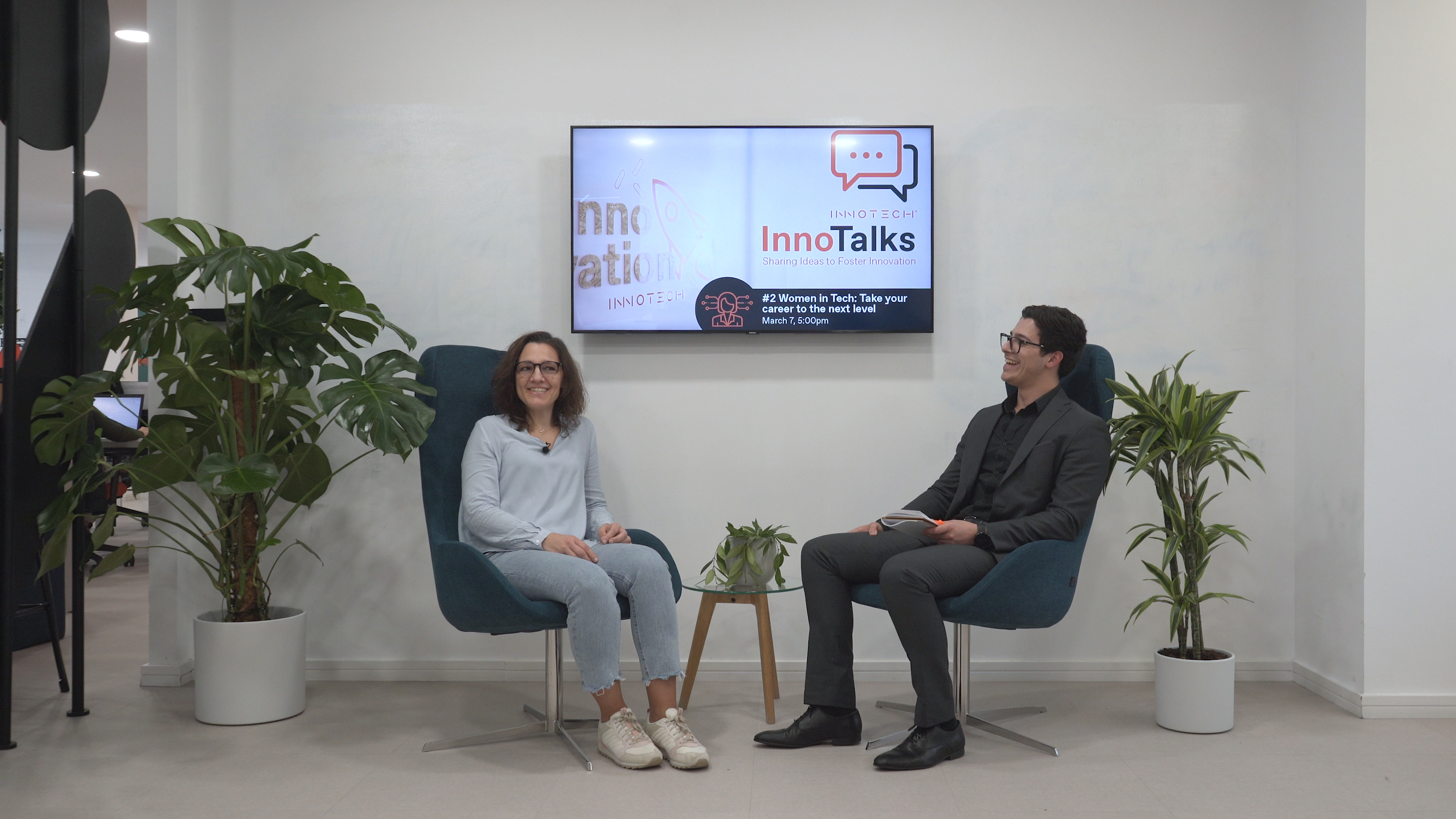Women in IT still have a long path to cross in order to reach gender equity. The truth is that even though we have seen a recent surge of the conversation about gender diversity in STEM areas, with organizations like Women in STEM and Women in Tech taking the lead in this conversation. Still, women are underrepresented, and often discriminated in IT roles. With this in mind, and in honor of International Women’s Day, InnoTech dynamized an InnoTalk focused on Women in Tech.
In this InnoTalk we had the pleasure to hear Sara Pedrosa’s testimony. Sara is a Team Leader at InnoTech, and as a woman in STEM in a leadership role, she has a unique perspective on the IT industry.
The gender gap in STEM
There is a significant gender gap in STEM fields, with women making up only 34% of the workforce in science, technology, engineering, and math (STEM). In the case of Computer and Mathematics specifically women make up only 26.9% of the workforce, as shown in a study conducted by the US Bureau of Labor Statistics.
Moreover, men vastly outnumber women majoring in most STEM fields in college, particularly in computer science and engineering. This gap is perpetuated by factors such as gender stereotypes, male-dominated cultures in engineering fields, and lack of role models for girls.
In general, Gen Z females are less likely than males to express interest in STEM careers due to factors like lack of exposure to STEM topics in school and lower confidence in their own STEM abilities. Some statistics from Gallup show that only 63% of females born between 1997 and 2011 show interest in STEM disciplines, as opposed by the 85% of their male counterparts.
Looking at Sara as an example, she studied Mechanical Engineering, knowing that this was a very male-dominated discipline. Still, she studied it in college, and worked in the area from some years. She faced some gender prejudices – “In recruitment, in the profession, a woman always has to work much harder to prove that she can do what a man does naturally and is expected to do – this in the task people expect a man to do.” As this repeatedly happened, Sara decided to take a turn in her career and go into IT. Even though IT is inserted in STEM, she feels that she doesn’t stand out as much as a woman in her current position.
Why are women in tech important?
It is difficult to give an answer to this question. We can assess that diversity in any kind is, in general, good for society, and for development teams in specific.
In Sara’s experience as a Team Leader she has found that “Men and women are different. In fact, we’re all different. From my perspective, the more mixed a team is, the better, both in terms of men and women, and in terms of profiles. If we manage to have a varied team, with a diversity of skills and profiles, it will certainly deliver better and work better.”
Sara’s experience is further corroborated by Finance Online. They present us with an interesting study that provide us interesting figures on gender diverse IT teams. For example, gender diverse teams do 73% better at making business decisions, more gender diverse companies have 25% more likelihood of above-average profitability, additionally 41 of the Fortune 500 companies count on female CEOs.
Sara further explained it, “In terms of managing men and women, it’s a challenge. At the moment my team is only made up of men and I’m missing a female member, I confess. I think this issue of feminine and masculine characteristics has a lot to do with society and what we’re used to doing. We end up developing certain characteristics more because that’s what we’re conditioned to. So it’s normal for a woman to be more organized, more sensitive and for a man to be more assertive, more direct to the problem and the solution. In an IT team, I see these characteristics too – a woman might be quicker to find a mistake, a detail, for example.”
What are the challenges for women in IT?
Women in the tech industry face various challenges that hinder their advancement and representation. Some of the key challenges include for women in IT include:
- Gender Bias: Women encounter gender bias, discrimination, and stereotypes in the tech industry, affecting their career progression and opportunities.
- Lack of Representation: As we have said before, women are underrepresented in tech fields, especially in leadership positions, which can limit their growth and development, and young women’s interest in the field.
- Access to Leadership Opportunities: Women often struggle to access leadership roles due to a lack of role models, mentorship, and organizational structures that support their advancement.
- Gender Pay Gap: Female tech professionals are often paid less than their male counterparts, highlighting a significant concern within the industry.
To address these challenges and support women in IT, initiatives such as promoting more women with computer science degrees, investing in women-owned tech companies, providing mentorship opportunities, encouraging women to speak at events, and fostering inclusive workplace cultures are crucial. By empowering women in technology through education, mentorship, advocacy against discrimination, and creating supportive networks, the industry can become more diverse, innovative, and inclusive for all professionals.
Sara opened a bit in the sense of being a woman in IT and managing her personal and family life with her professional ambitions. “I personally have always managed to reconcile work and family life because it’s not like you have a very strict timetable, for example. There are almost no problems with having to leave earlier. Everyone has to work at that time, but it’s a permanent, fair team, so it’s also like there isn’t a particular context in my team for women to be able to reconcile their personal and family lives.”
InnoTalk: Women in IT
Upon hearing Sara share her story as a woman in IT, and in STEM, as she has worked in other scientific areas, we can conclude that the job market is making its way into more equal grounds. Still, looking at the statistics presented, we know that there is a long haul to cross until we close the existing gender gap in IT.


